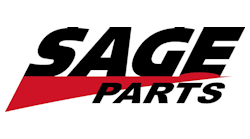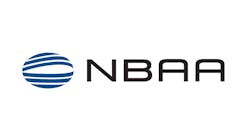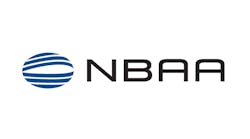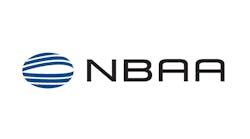For some of us in the aerospace industry, a milestone will take place Oct. 20 - 22, 2008 in Indianapolis — the 100th meeting of the SAE Technical Committee AGE-2. For others, they are asking, “What is SAE, what is this committee and why all the hoopla?” As with any good story, the best place to start is at the beginning, so let’s begin with SAE in general.
SAE Origin
SAE International was originally known as the Society of Automobile Engineers (SAE). Established in 1905, SAE started with 30 members, including one by the name of Henry Ford. Its purpose at that time was to be the focal point for the collection, organization and distribution of information to help develop standardization in the automobile industry. Five years later, in 1910, with the tremendous amount of engineering activity going on in aircraft development, the SAE Council decided to broaden its scope to cover aviation. Because of this, SAE’s charter was amended to cover all forms of self-propelled vehicles, whether borne by land, sea or air.
This broader scope of coverage became a reality six years later at the June 1916 SAE Council meeting. Many new faces from the aviation field attended the meeting, including Orville Wright and Glenn Curtis, and representatives of the US Army and Navy aviation, and the National Advisory Committee for Aeronautics.
There was at that time a loose association called the “American Society of Aeronautic Engineers,” but some, including Curtis and Wright, thought that joining with an already established SAE organization would be a more effective course of action. So they had come to “confer with the council” to explore the possibility of having aeronautical engineers join and participate in SAE. This, of course, was exactly in line with the council’s earlier ideas of broadening SAE’s scope, and the notion was warmly received. However, there emerged one very big sticking point: The name “Society of Automobile Engineers” didn’t sit at all well with the aviation professionals. In the end, however, a solution was found. It is reported that Elmer Sperry came up with the idea that the word “Automobile” be changed to “Automotive” (meaning all things self-propelled).
The name was then changed to the Society of Automotive Engineers and very soon afterward, members included Orville Wright, Glenn Curtis, Glenn Martin and many other famous aviation industry pioneers.
One year later, SAE developed its first aerospace standard (AS) for an interchangeable aeronautical spark plug, which was formulated in cooperation with the British, French and Italians.
SAE Today
In 2006, SAE officially changed its name to SAE International. SAE’s technical standards are recognized worldwide and cover four major areas of mobility engineering: aerospace, automobile, commercial vehicle and motorsports. Activities in each of these areas are overseen by separate councils and were further segmented into various specialties.
In the case of aerospace, the Aerospace Council, comprising executives from across the industry, oversees eight divisions that cover all aspects of aerospace technology, including electronics, avionics, propulsion, materials, mechanical & fluid, etc.
SAE International has aligned itself with such affiliate organizations as the Professional Aviation Maintenance Association (PAMA), Performance Review Institute, SAE Foundation, SAE BRASIL, SAE INDIA, SAE UK and SAE Institute. Truly, global engineering barriers have been brought down through these relationships.
SAE AGE-2
Air cargo and aircraft ground equipment is part of one of these aerospace divisions (Airport/Ground Operations and Equipment Division), and is handled by the Technical Committee AGE-2 (Air Cargo & Aircraft Ground Equipment & Systems). This committee’s work on technical standards development is done by its two subcommittees AGE-2A and AGE-2C. The former deals with onboard aircraft cargo handling; the latter deals with ground-based cargo handling and aircraft servicing.
Originally, there was an AGE-2B subcommittee that covered aircraft servicing. But it was decided that aircraft servicing and ground handling vehicles were synonymous, so the AGE-2B subcommittee was combined with the AGE-2C subcommittee and renamed Vehicle Maintenance & Aircraft Servicing.
Within the last year, the AGE-2D subcommittee was created to deal with packaging, handling and transportability (shipment of aircraft spare accessories, spare engines, etc.). The entire AGE-2 group comprises individuals from across the industry including the major airframers (Boeing, Airbus), ground equipment manufacturers, onboard equipment suppliers, container and pallet (ULD) manufacturers, ground handling and servicing equipment suppliers and, most importantly, the airlines themselves.
Sept. 11, 2001, as we all well know, changed aviation forever. As many airlines, ground equipment manufacturers and maintenance providers shedded operations and employees, this committee participation was decimated as well. Slowly, as these aviation businesses have re-defined their operations, the committee is seeing new projects and new participants coming forward for the sake of guidance and standardization.
Today, the AGE-2 committee’s objectives are basically what they always have been — to develop and publish useful information in the form of aerospace standards (AS), Aerospace Recommended Practices (ARP) and Aerospace Information Reports (AIR) to help progress the industry and improve efficiency through standardization. Members serve based on their knowledge, expertise and experience and not as agents or representatives from any organization.
Current standards development and revision activities include, but are not limited to:
- Communication with the Air Transport Association and Regional Aircraft Association concerning safety, aircraft ground damage trends and revision of AIR 1589- Aircraft Damage Caused by Ground Support Equipment.
- Review of ISO 6858 concerning electrical supply specification for aircraft ac and dc ground power. These specifications are being re-defined with respect to the Airbus A380 and Boeing 787, and Hamilton Sundstrand has taken a lead position in revising the document.
- Air cargo unit loading devices (ULD), cargo tiedown nets, fittings, cargo rings, performance requirements and test parameters.
- Shipping caps, covers, plugs, aircraft engine transport devices.
SAE AGE-2 is currently led by Chairperson Vic Urzi of Sage Parts, and Vice-Chairperson Hans van Rooijen of Telair International. With the assistance of sub-committees AGE-2A; Cargo Handling, AGE-2C; Vehicle Maintenance and Aircraft Servicing, and AGE-2D; Packaging, Handling and Transportability, SAE AGE-2 is generally recognized as the preeminent body for the development, collection, organization, and dissemination of related specifications and standards in the aviation industry around the world.
Personally, SAE has served me well technically in my 33-year aviation career working for airlines, ground equipment manufacturers and aviation product suppliers.
During one very large project, SAE standards were the basis for me to specify precise pre-conditioned air and external power connection requirements on new airline aircraft, saving our ground equipment technical group from what could have been a very embarrassing and costly oversight. The ability to have an active role in document development and frequently networking with experts in the industry has been invaluable.
The next AGE-2 committee/subcommittee meetings (No. 99) is set for April 21-23, 2008 in San Diego, Calif. Then, meeting No. 100 will follow Oct. 20-22, 2008 in Indianapolis, with special events being planned. For more information about attending, participating and networking with this committee, contact Ms. Maureen Lemankiewicz- SAE Committee Representative, [email protected], or visit www.sae.org for further information.
(A very special thank you to Chris Stratford, senior engineer, Goodrich Corporation for his extensive contributions to this article. Stratford is an SAE Member, SAE document producer and past SAE AGE-2A chairman).




